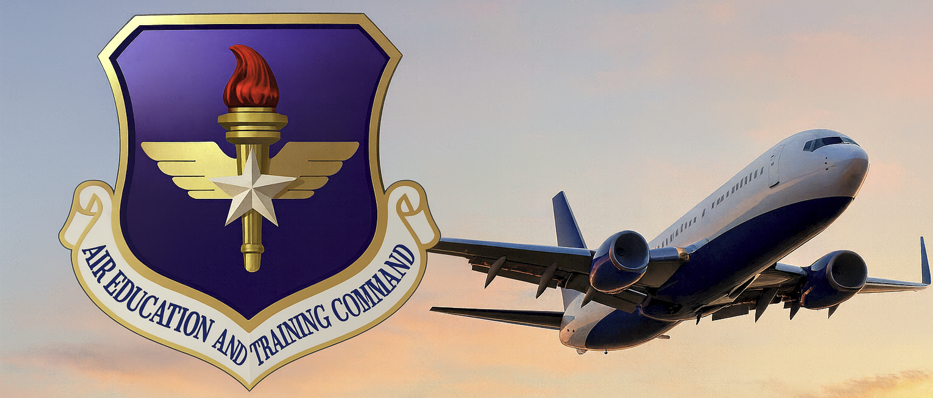From Training Command to the Airlines: A Flight Instructor''s Guide to Ensure a Seamless Transition
The transition from a military flight suit to an airline uniform is a well-trodden path, especially for those serving as instructors in training command. Yet, one of the biggest, most underestimated hurdles isn''t the interview itself—it''s the meticulous prep work. I was shocked at the lack of specific guidance on preparing the single most scrutinized part of your application: your logbook.
The hardest part of applying to the airlines is getting all your ducks in a row, specifically your flight hours. It can be a massive headache, causing stress right when you need to be at your most confident.
Here are the things I wish I had done differently during my instructor tour. Follow these steps to save yourself countless hours of frustration and ensure you walk into your airline interview with total confidence.
Tip 1: Ensure Flawless Record‑Keeping From Day One
Keep your own personal logbook, and be meticulous. After every single sortie, take two minutes to log your hours to the tenth of an hour. This personal record will become your source of truth.
At a minimum, record for every flight:
- Date of the sortie
- The name of the pilot you flew with
- Flight duration (to the tenth, e.g., 1.2, 1.5)
- Number and type of approaches
- Night hours and landings
- Brief notes (e.g., “Student Checkride,” “CT sortie,” “Instrument proficiency”)
This practice will ensure that when it''s time to compile your career hours, you have a product you know is 100% accurate. You can easily pull details like total landings or instrument approaches, which some airline applications specifically request.
What If You''re Already Behind? Retrieving Your Hours
If you’re well into your instructor tour and haven''t kept a personal log, reconstruct your history. Get a summary of your hours from your service''s aviation records system (e.g., the Air Force''s ARMS) via your service portal, then request a line‑by‑line printout from your HARM/S‑1 office for complete data.
Heads up: Systems evolve. Double‑check with your unit''s admin office to ensure they can still access and print detailed flight data from years past.
A Word of Caution on Digitization Services
Services like Milkeep can digitize records into a spreadsheet. Helpful, but not perfect. Expect to resolve flagged duplicates and discrepancies. Avoid this by keeping your own digital logbook from the start.
Tip 2: Ensure You Correctly Categorize Your Training Command Hours
Airline applications demand a specific breakdown of your time: PIC, Instructor, etc. In CT sorties with another instructor, who is PIC? You need a logical, defensible categorization and a clear explanation ready for your interview.
A Practical Breakdown for T‑6/T‑38 Instructors
Since the T‑6/T‑38 are not crew aircraft, log either primary or instructor time (no secondary). A conservative, defensible method:
- Divide total CT hours 50/50 by cockpit. Estimate 50% front‑seat (primary) and 50% back‑seat (instructor).
- Rear cockpit = Instructor time. That''s 50% of total CT hours.
- Front cockpit split 50/50 into PIC vs Primary. Count PIC only when you signed for the aircraft.
Resulting breakdown of total CT hours:
- 50% Instructor time (all rear‑cockpit hours)
- 25% PIC time (half of front‑cockpit hours)
- 25% Primary time (remaining front‑cockpit hours)
Some applications don''t capture “Primary.” That''s fine—another reason detailed notes (especially who signed) are invaluable.
Tip 3: Ensure Your Resume Reflects a Well‑Rounded Officer
- Volunteer for key schools. Safety School and Instrument School (AIS) are common application check boxes—get them if you can.
- Maintain a meticulous job history (no gaps). Log exact start/end dates for each role; precision here matters.
Tip 4: Ensure You Prioritize the Right Awards
Airlines weight flying awards more heavily than administrative awards. Focus on cockpit excellence:
- Instructor Pilot of the Year/Quarter
- Distinguished Graduate from upgrade or pilot training
- Top Gun or other flying competition awards
The Payoff: Confidence Under Pressure
Some airlines will grill your logbook to see how you handle pressure. When your numbers are accurate to the tenth, you project confidence and can focus on the rest of the interview.
Ready to make your transition easier?
Run an automated review to verify your hours, fix gaps, and get a submission‑ready checklist.
Create your accountLearn moreFAQs
- How should military instructor time be represented?
- Use standardized civilian categories with a documented conversion. Keep notes for dual‑given, simulator time, and NVG.
- Which records matter most?
- Training folders, grade sheets, Form 781/781A or equivalent, and any endorsement logs. Digitize with clear filenames and dates.
- How do I prevent discrepancies after digitization?
- Reconcile flagged duplicates and gaps. Maintain a single source of truth and log any corrections.
- What if an application lacks “Primary” fields?
- Maintain detailed notes on who signed and when. Consistency across applications is key.
For a complete career roadmap, start at the Pilot Career Paths Hub.
